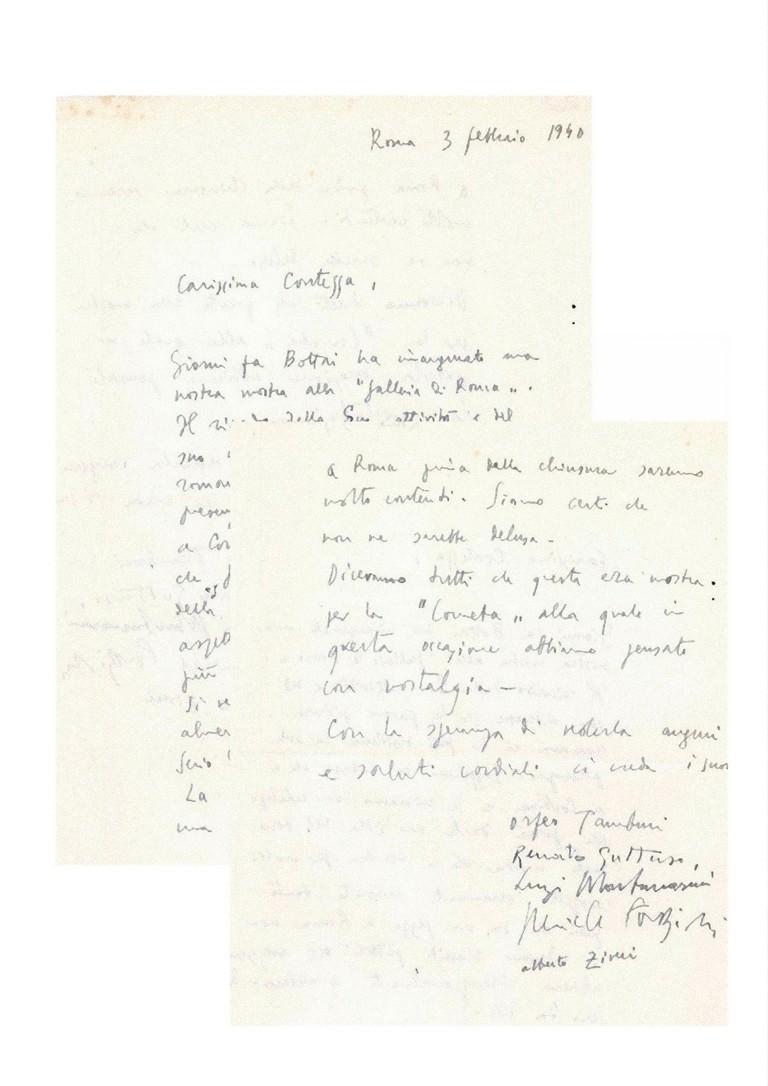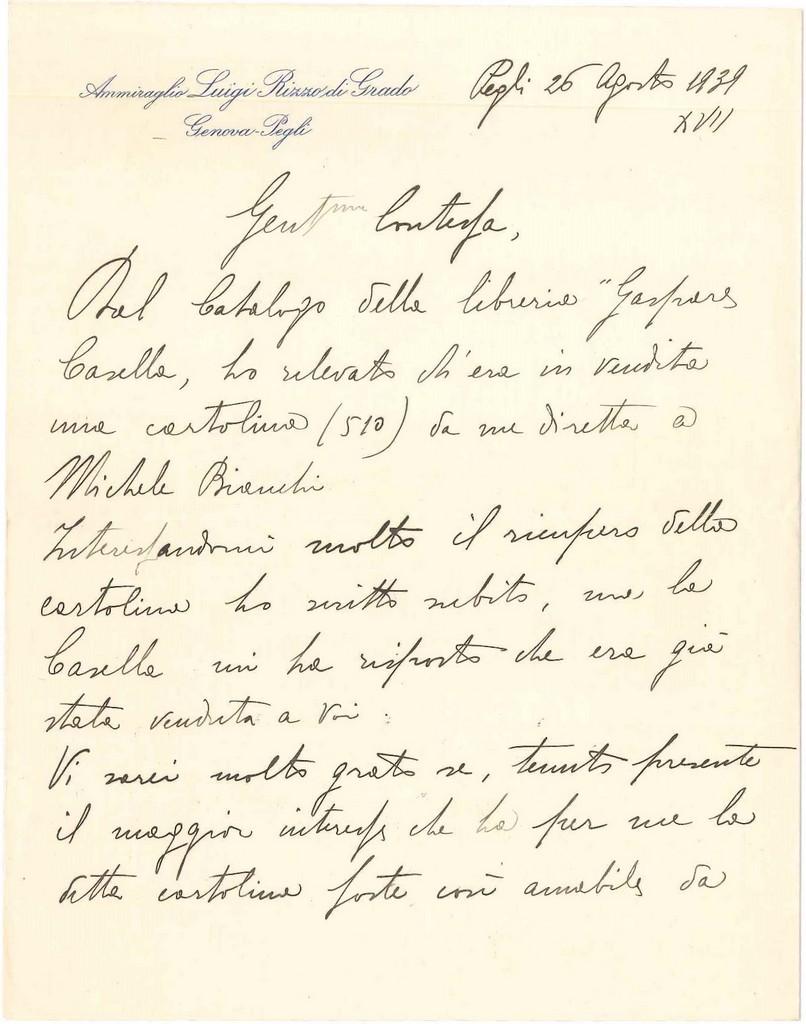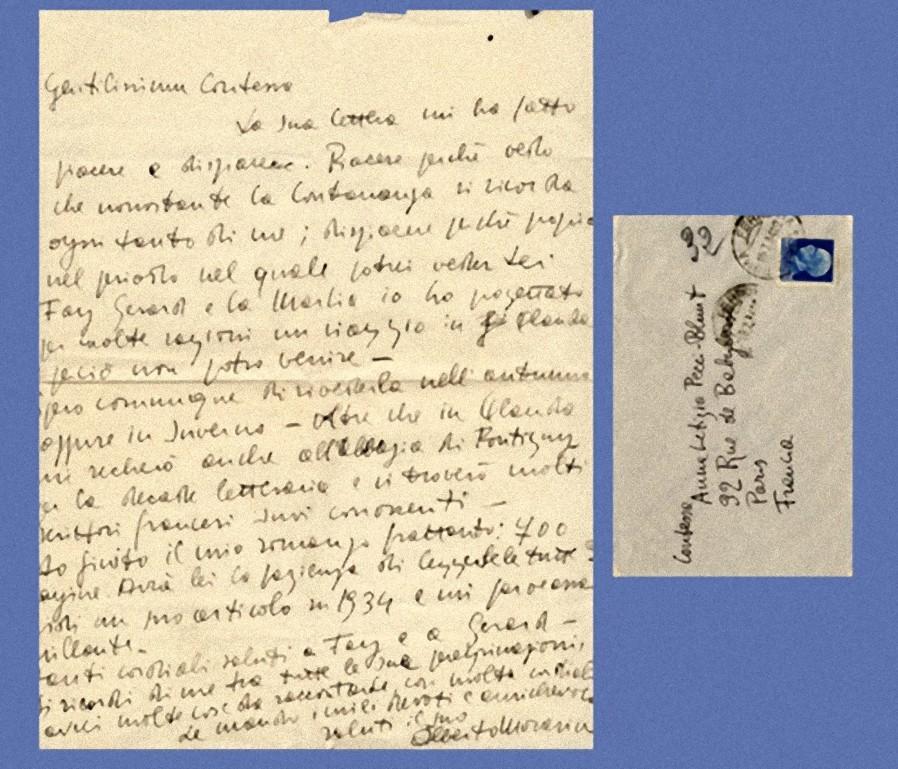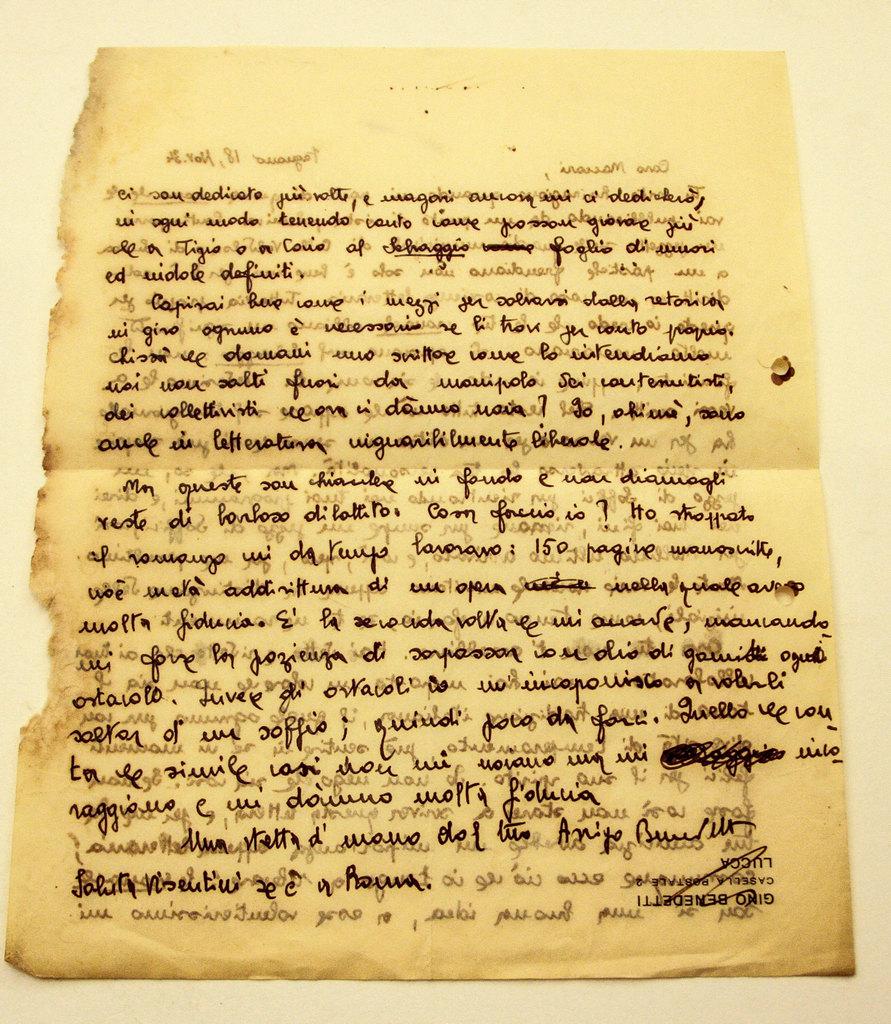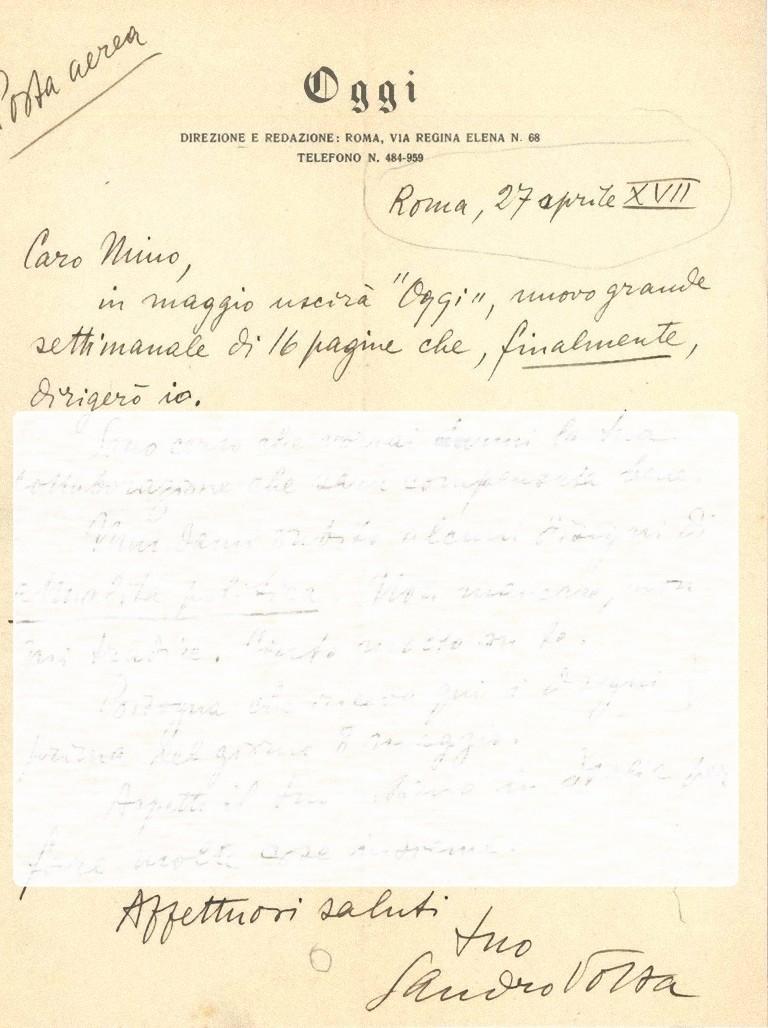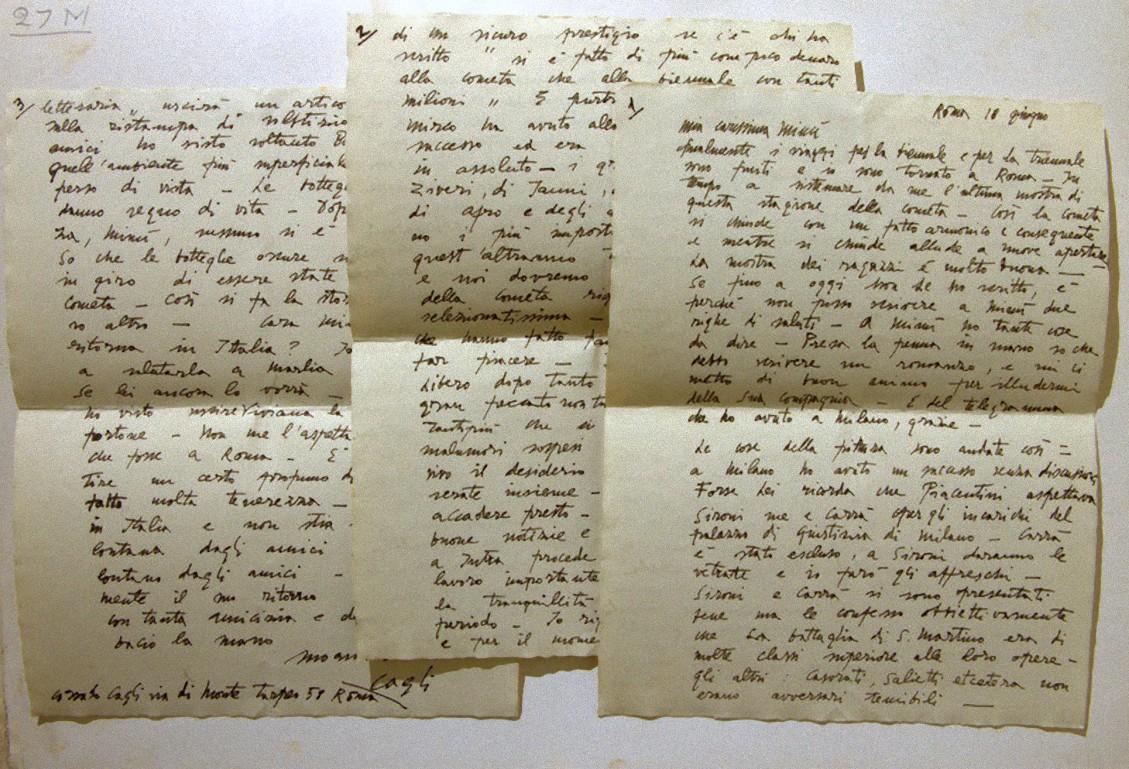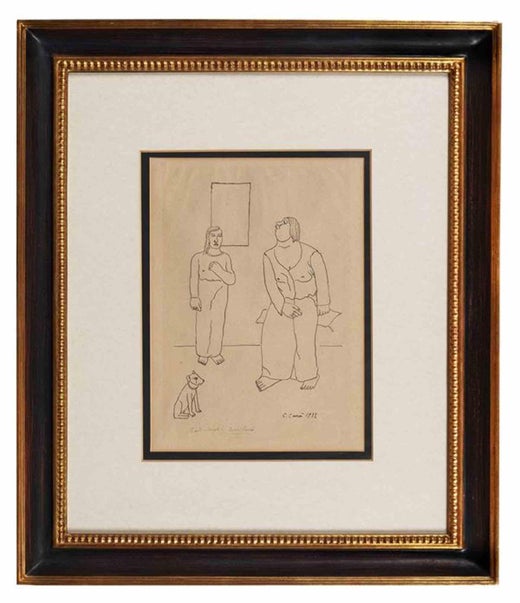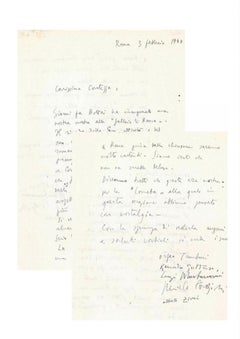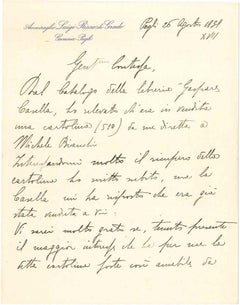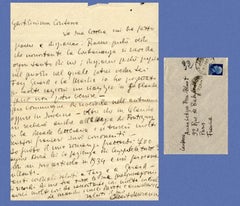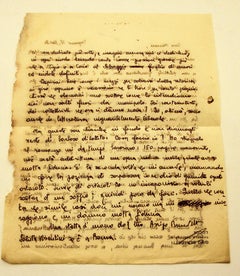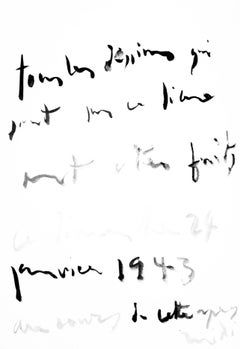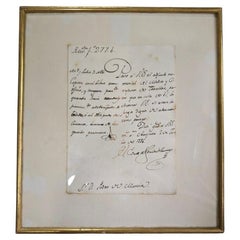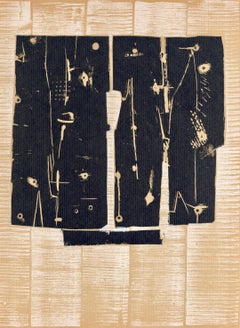Carlo Carrà"About the New York Exihibition"- Letter by C. Carrà to L. de Libero - 19371920 ca.
1920 ca.
About the Item
- Creator:Carlo Carrà (1881 - 1966, Italian)
- Creation Year:1920 ca.
- Dimensions:Height: 19.3 in (49 cm)Width: 12.8 in (32.5 cm)Depth: 0.04 in (1 mm)
- Medium:
- Movement & Style:
- Period:
- Condition:Insurance may be requested by customers as additional service, contact us for more information.
- Gallery Location:Roma, IT
- Reference Number:Seller: M-940281stDibs: LU65034711762
Carlo Carrà
Carlo Carrà was an Italian painter and a leading figure of the Futurist movement that flourished in Italy during the beginning of the 20th century.
In addition to his many paintings, Carrà wrote several books concerning art. Lived through and participated in all the avant-garde art movements of the 20th century, from Futurism (the futurist phase lasted 4–6 years) to metaphysical art, and from the Novecento Italiano movement to the Valori Plastici experiment.
“For the spirit, there exist no contradictions – only transformations and developments. Changing direction in art does not mean rejecting the past but broadening it so that it melds with another aesthetic concept; it means discovering new and hitherto unknown relationships, and opening one’s eyes wider, the better to grasp a greater number of different realities.” So did Carrà explain his chameleon-like transformations in 1942, after having, through long experience, found his own, autonomous style, while at the same time keeping up with the most recent trends in European painting and renewing the Italian figurative tradition.
In 1928, Carrà exhibited 14 paintings at the Venice Biennale, and in 1931 he had his room at the first Rome Quadriennale. In 1933, he signed the Manifesto Della Pittura Murale. Between 1934–38, Carrà traveled to Campania, Algeria and Malta, devoting himself to a series of large murals.
Find authentic Carlo Carrà art on 1stDibs.
- ShippingRetrieving quote...Shipping from: Roma, Italy
- Return Policy
More From This Seller
View All1940s Contemporary More Art
Paper, Ink
1930s Modern More Art
Paper, Ink
1950s Modern More Art
Paper, Ink
1930s Modern More Art
Paper, Ink
1930s More Art
Paper, Ink
1960s Contemporary More Art
Ink, Paper
You May Also Like
1950s Cubist Abstract Prints
Lithograph
Antique Late 18th Century Spanish Other Historical Memorabilia
Paper
1930s Art Nouveau Prints and Multiples
Lithograph
1950s Modern Abstract Prints
Woodcut
1970s Modern Abstract Prints
Lithograph
1950s Modern Abstract Prints
Lithograph
